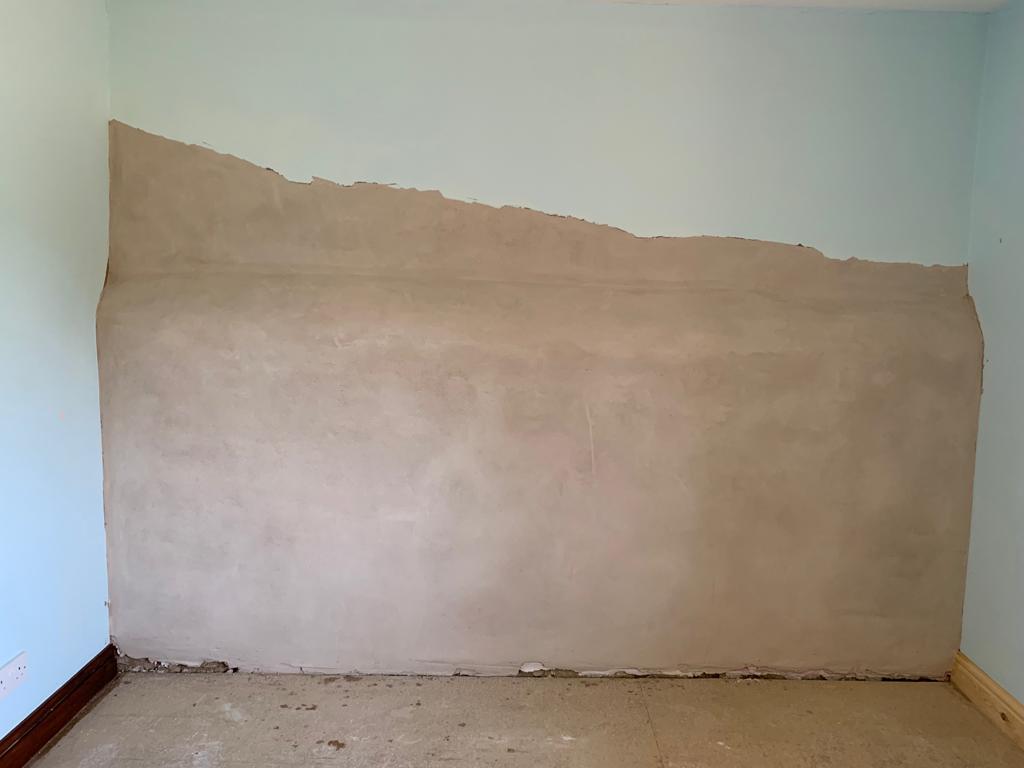
Location: Abingdon, Oxfordshire
Type of property: Grade II listed
Services used: Lime plastering
Materials Used: Lime plaster Mesh
Problem: In the 1800’s a stone wall would be finished with a lime plaster inside and a lime wash outside. Before the times of any damp proof coursing any water rising from the ground would evaporate into the atmosphere. Indoors, the building would typically have two fireplaces that facilitated the drying of the interior, and the buildings themselves were less-well sealed as they are these days, so moisture could easily escape thanks to dry, free-flowing air. Rising damp from ground water wouldn’t affect the building as the structure would allow it to breathe through. Our building on this project was a 300-year-old Grade II listed building that had lost some original lime plaster on an external wall on the second floor, through debonding. The owner had carefully removed the remains of the plaster themselves. English Heritage rules that only lime can be used in this type of building, to preserve the original construction. We were content with this ruling as lime really is a wonderful product that does a fantastic job in the right circumstances, and clearly lasts for hundreds of years. The fireplaces were still in good working order and used regularly and there was no damp present, so we were able to be sympathetic to the building and restore the wall to its previous condition. It’s worth noting that modern properties are now very well sealed against drafts and ground water, and lime plaster is no longer used. With the advent of these modern building techniques, materials and heating systems, we see damp problems occurring such as condensation.
Works completed: Since the area to be plastered was already cleared by the owner, we only had to prepare the surface and dampen the area to be covered to aid bonding. An initial 9-12mm scratch coat was applied, then a simple mesh, which originally may have been straw, followed by a second scratch coat of 9-12mm. The final coat of lime plaster was applied using techniques including sponging to ensure even the finest holes were smoothed over.
